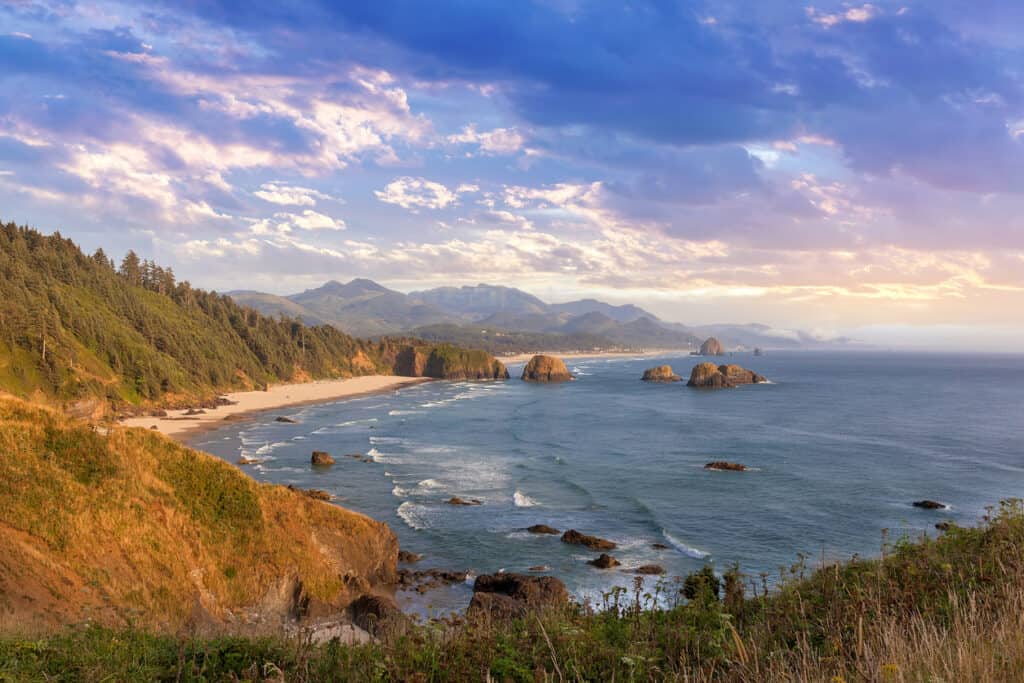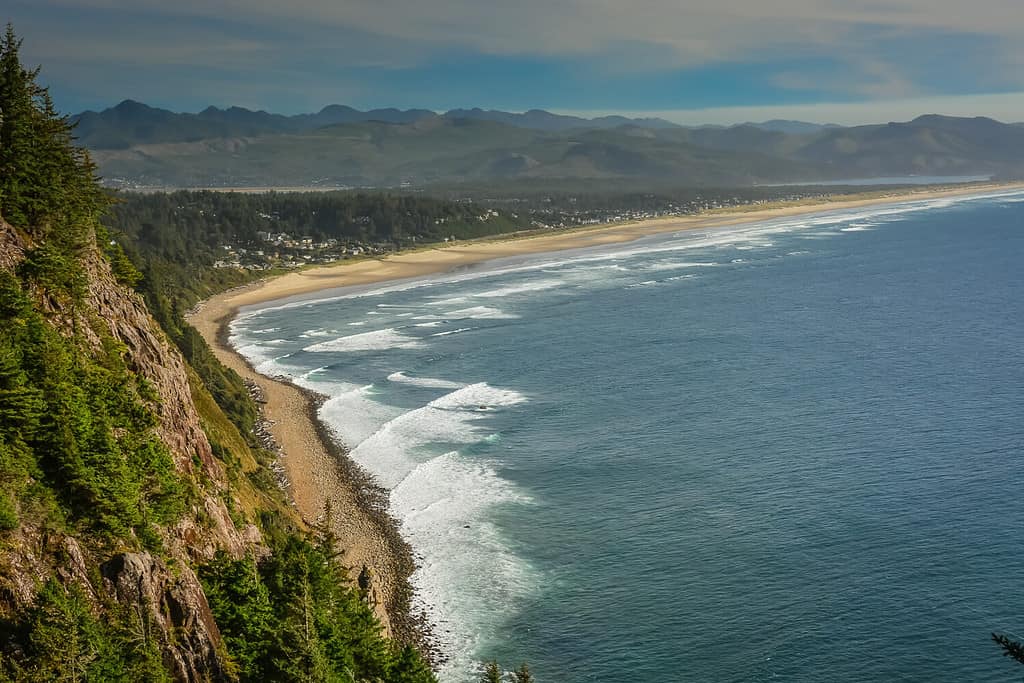The state of Oregon is comprised of stunning and variable topographies and ecosystems including coastal regions, temperate rainforests, snow-capped mountains, and high deserts. If you’re planning on traveling to Oregon, you may be interested in where the lowest point is and if it’s a place you can visit.
In this guide, we’ll cover where the lowest point in Oregon is situated, how to visit and provide interesting facts about the area.
Read on to learn more.
The Lowest Point in Oregon: Formation History and How it Compares Across the State
As a coastal Northwest State, the lowest point in Oregon exists where the coastline meets the Pacific Ocean. Along this meeting point of coastline and ocean, the elevation measures 0 feet above sea level. Contrasting with this low point, the highest point in Oregon is snow-capped Mount Hood, a volcano that towers 11,240 feet above sea level. The mean elevation across this topographically diverse state is 3,300 feet.
The geological history of the land now known, by some, as Oregon spans back over 150 million years ago as plate tectonic shifts formed the landscape. Initially, the western coastline of North America actually ran along Idaho. 150 million years ago, plate tectonic shifts sent land formations crashing into the old coastline, adding to the mass of North America and beginning the process of Oregon’s formation. This tectonic process produced stunning variations of the landscape and continues today through the, currently subtly active, Cascadia subduction zone.
Visiting the Lowest Point in Oregon
When traveling to Oregon, you’ll find the lowest point of the state where parts of the coastline meet the Pacific Ocean. This ocean is the largest and deepest on the Earth. It currently covers 60 million square miles, accounting for over 30% of the earth’s surface. The Pacific Ocean and its coastlines are home to hundreds of thousands of species of microbial, fungi, plant, and animal life.
Along Oregon’s sea-level coastline, you can visit some of these amazing lifeforms and experience the stunning beauty of the landscape. Below, we’ll cover some of the most incredible places to visit along the coast that specifically includes sea-level areas.

The lowest point in Oregon exists where the beach meets the Pacific Ocean
©iStock.com/JPLDesigns
Manzanita Beach
Located on the northern coast of Oregon in the small coastal village of Manzanita, this beach offers seven miles of incredible ocean, cliffside, and mountain views. Manzanita Beach has a gorgeous white sand shoreline and is an excellent spot for sunbathing, swimming, and surfing. From this area, you can easily head north to access the beautiful Nehalem Bay State Park and take a hike up Neahkahnie Mountain for even more incredible views.
If you’re looking to visit a sea-level area in Oregon that is easily accessible, stunning, and has plenty of amenities nearby, this beach may be just the ticket.

Visit the Manzanita Beach for sandy beaches, swimming, and breathtaking cliff and mountain views.
©Art Boardman/Shutterstock.com
The Lowest Point in Oregon: Salishan Spit and the Siletz Bay
If viewing wildlife is your jam, head on out to the Salishan Spit, located north of Newport, Oregon. Here, you can view year-round harbor seals. A sandspit is essentially a sandbar that attaches to the coastline and extends into the ocean. Longshore movement of sediment forms sandspits. On the Salishan Spit, harbor seals often congregate to rest and hunt fish. This is a prime hunting spot as fish travel in the passage where the Siletz Bay meets the Pacific Ocean. You can access this area fairly easily by parking at Gleneden Beach. From there, you can make the gentle 2.5-mile hike north along the coastline.
Once you reach the Salishan Spit, you can enjoy views of harbor seals, the Pacific Ocean, and Siletz Bay. Brown pelicans, the great blue heron, bald eagles, red-tailed hawks, the western gull, and the bufflehead are just a few of the bird species that frequent the Siletz Bay estuary.

Harbor seals frequent the Salishan Spit for rest and prime hunting opportunities.
©yhelfman/Shutterstock.com
Visting the Lowest Point in Oregon: Harris Beach State Park
If you’re traveling to southern Oregon, be sure to not miss stopping through Brookings, Oregon. This coastal town boasts an incredible park at sea level with gorgeous scenery- Harris Beach State Park.
There, you can see stunning sea-stack rock formations, sandy beaches, cliffs, and tide pools. Camping is available year-round in the 174-acre park.
Additionally, this state park is home to the largest island located off the coast of Oregon, Bird Island. This island is a national wildlife sanctuary. Bring your binoculars and you might be lucky enough to see the tufted puffin. The tufted puffin is a rare species that uses this island as a breeding ground.
Finally, if you visit the beach from December through March, you may get to spot a whale! The most common species to see off the shores of Harris Beach is the gray whale. This gorgeous animal migrates through these waters annually on its way to Baja, Mexico. The best time to see a whale from this coastline is in the early morning. Keep your eyes open for spouting, and grab some binoculars to get a better view if you catch a glimpse of these beautiful marine animals.

Enjoy the stunning coastline and rock formations dotting the waters of the Pacific at Harris Beach State Park.
©Muriel Lasure/Shutterstock.com
The photo featured at the top of this post is © Bob Pool/Shutterstock.com
Thank you for reading! Have some feedback for us? Contact the AZ Animals editorial team.







